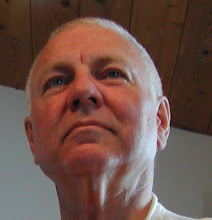.
"Dare, dare, dare
Double, double dare
If you chicken out
You'll have no hair!" (rope-skipping chant)
What is it about 29.5?
Whether or not you've passed that milestone in your own life, question any five or ten people of your acquaintance about what was happening in their life around that age and you will be astonished.
Almost without exception, they will have gone through a major upheaval in their life ranging from a complete career change, to a change of location, a separation or divorce, or even some combination of each of these.
What is even more remarkable, the same thing happens again at around 59 years old. Don't be too fussy about the specific dates. These are just the fulcrum around which the events and associated relizations occur. Often they will recall an uneasy or unsettled feeling settling in as early at 27 or 28 years old with the full resolution not completed until 31 or even 32.
When pressed to think about it, though, they will each describe a change that is more than superficial. It won't be just an ordinary house move or job promotion. It will be the outter correlate of one of lilfe's profound inner milestones.
When you have confirmed this to your own satisfaction, that the pattern really does exist, the next step is to notice what exactly the changes mean.
One way to calibrate this involves noticing the different focus in obituaries or epitaphs for people who die before they turn thirty, compared to those who die after that.
People who croak during their first thirty years are normally described in terms of what was done to them. "He was the son or daughter of so-and-so". "He was raised a member of such-and-such a Church." "She was a graduate of such-and-such a university." "She worked for such-and-such a company."
By contrast, those who pass away during their second round, between thirty and sixty years old, are remembered more as the "mother or father of so-and-so", "the professor emeritus at such and such a university, " or "the founder and owner of such-and-such a company."
Put simply, the first cycle of life consists largely of what was done to us, through genetics, education, peer expectations, and social dictates, while the second cycle consists more of what was done by us.
Which raises a question. The focus and intent of this entire blog in fact.
"What the hell is the third cycle all about?" Sixty to Ninety. 6290.
Well, a little digging suggests it consists largely of trying to figure out who we really are! What's left after the programmed roles and structures are stripped away. As we are less and less frequently acknowledged for the elaborate structures and scripts we built and wrote to get ourselves through the first two cycles, what is left?
The answer, of course, should be as profound as it is undocumented, at least in this specific context.
Next time we meet, I'll describe a handy model for mapping each of the three cycles in life, a model or map of the territory. It will ring so true and seem so intuitive, you will have no trouble noticing where you sit on the wheel at this specific time in your life, no matter how old you are right now.
For those who happen to be going through the sometimes excruciating upheaval of being 29.5 or 59.0 years old, it might even give a perspective, a compass heading that can transform the experience into something not only bearable, but downright fascinating.
.
Monday, May 17, 2010
Subscribe to:
Post Comments (Atom)

No comments:
Post a Comment